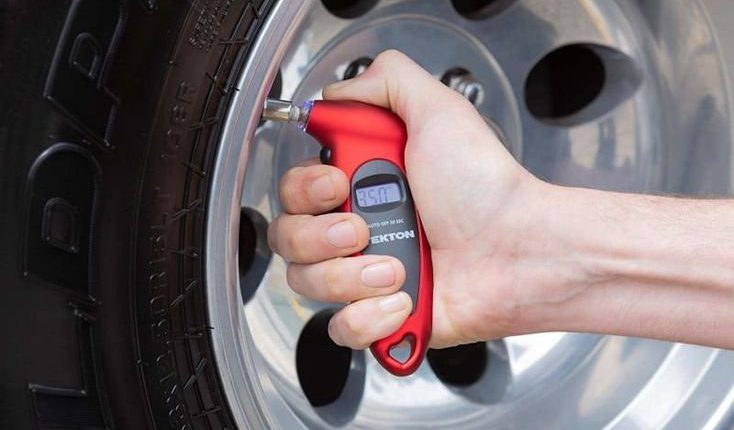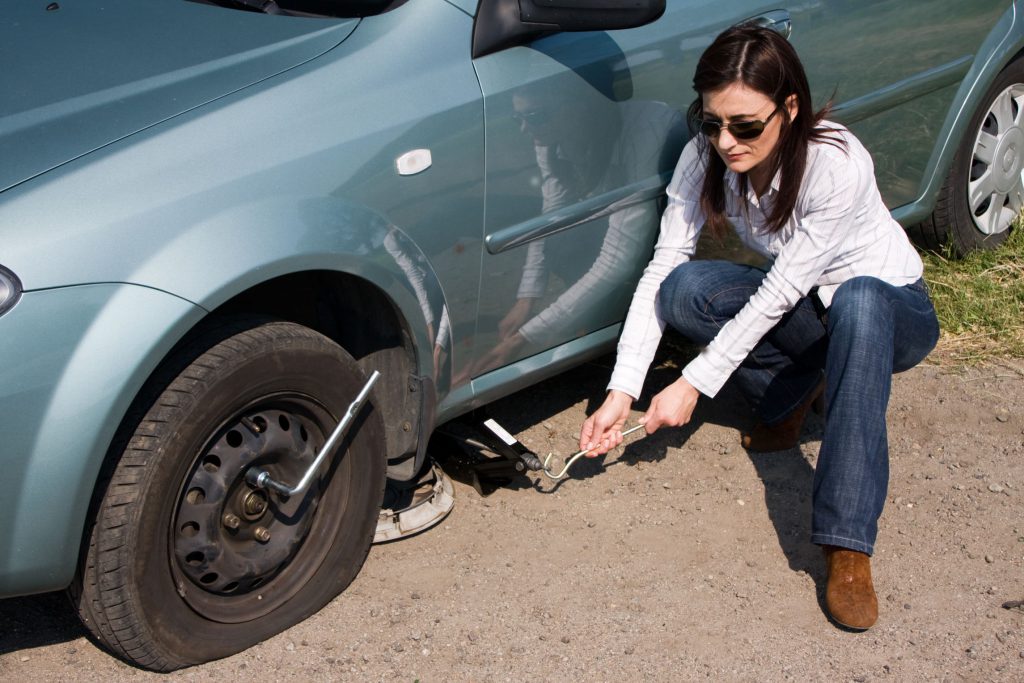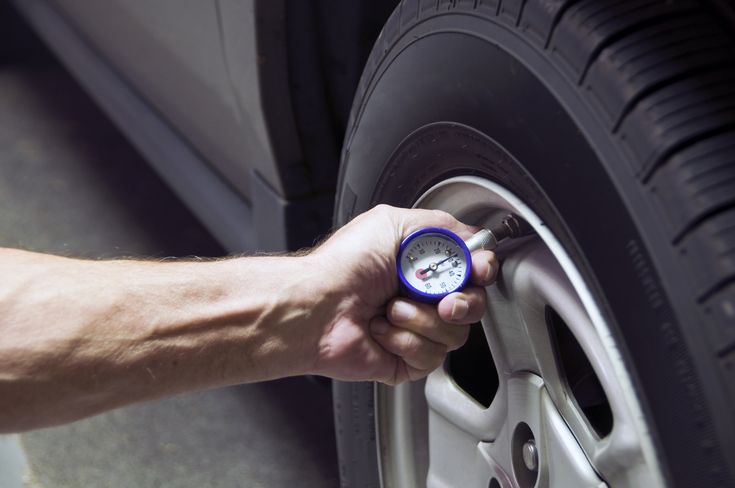Summer is coming soon. It is the perfect time for the whole family to travel in a spacious and cool car. However, this is also the time to pay special attention to car tires because the tire is the part that comes into direct contact with the hot road surface. Many motorists will assume how summer and winter can affect my tires?
In winter, when the temperature is low, the pressure decreases, and in the summer when the temperature is hot, the pressure increases. But how does tire pressure change with temperature? Let’s see the following specific analysis:
Contents
The Important Of Tire Pressure (PSI)

Standard tire pressure helps increase tire lifespan and performance, ensuring driver safety. Tire pressure is regulated depending on the vehicle model. This standard is used to measure the amount of compressed air pressure inside a tire. When the driver inflates the correct PSI. The vehicle moves on the road with the entire tire surface. And the contact surface is evenly spread and worn, helping to increase operating efficiency and wheel longevity. This also brings smooth driving, stable cornering ability, good braking, and the best fuel economy.
Typically, the recommended tire pressure is between 30 psi (~2.1 bar) and 35 psi (~2.4 bar). However, PSI standards for each car model are different. Therefore, in order to have a suitable tire maintenance plan, drivers need to know the amount of pressure suitable to the type of vehicle in use. This number can be printed on the vehicle label affixed to the door frame in the driver’s seat or directly on the tire.
Checking tire pressure regularly is one of those simple yet very important things. Because the pressure that the manufacturer does not specify can cause much damage, up to 90% of tire failures stem from improper tire pressure.
If your tire has high pressure, the wheels can have reduced traction, reduce braking efficiency and affect the vehicle’s operation, uneven tire wear (concentrated in the middle part) with other risks. Vice versa the case of low pressure, the fuel consumption will increase due to the large rolling resistance. With normal tires, If the pressure is below the standard of about 3PSI, fuel consumption can increase by about 1-2%.
>> Related post: Driving with Low Tire Pressure: How Dangerous Is It?
How Does Tire Pressure Change With Temperature?
There are many external factors affecting car tire pressure, in which weather is assessed to have a strong influence. However, one of the weather factors that have a big influence on car tire pressure is temperature. Air has a great elasticity with temperature, so when the temperature changes, the tire pressure will also fluctuate.
Does tire pressure increase with heat? To answer this question let’s first learn about the relationship between tire pressure and temperature. At high temperatures, tires visually inflate because air takes up more volume. On the other hand, the air takes up less volume in cold weather. The impact of weather on tire pressure is visible in all months. We can understand that temperature and tire pressure will have a proportional relationship. Another important thing is that it can be easily understood because of the “friction” factor. When driving long distances, the tires will rub against the asphalt. Accordingly, the friction will create extra heat making your tires even hotter than in the summer.
The effect of high temperature on tire pressure
Too much friction and drag will cause heat to develop inside the tire, causing the air inside to expand, and in hot weather, tire tension will increase significantly. Summer weather in some places often has high temperatures, ranging from 86°F to 107°F, which directly affects tire pressure. Since air expands with temperature, when the temperature changes, the pressure also changes. How much does tire pressure increase when hot? Specifically, for a 10°F increase in temperature, tire pressure will increase by 1 PSI. This can cause tires to explode or wear out, resulting in braking not effectively, and causing unsafe while driving the vehicle.
If your tires are overheated, the normal friction of rolling on the road and driving over rough terrain could even lead to one of your tires exploding, even in serious cases.
Note that: As we all know cold weather often causes low tire pressure. But in some cases in hot weather, the tire pressure is still low! What causes low tire pressure in summer? There are a number of potential reasons why your tire pressure is low in the summer, including temperature changes or slow leaks.

Impact of low temperature on tire pressure.
Cold climates can completely reduce tire pressure, so it’s important to keep PSI units in mind in the winter if you want a safe and comfortable ride. When winter comes, the temperature drops, causing the air density to increase or the air to become “dense”. This leads to a drop in air pressure and a natural reduction in tire pressure. As the temperature is low, the air element in your tires shrink.
If the temperature drops to 50°F, the tire pressure will reduce to 1 PSI. Even so, simply driving the car can warm up the tires somewhat, and this thermal expansion means the tires will return to their normal tension. During extreme or prolonged cold periods, you should check your tire pressure every month. Although the tire pressure expects to reach 32 PSI, you should check the PSI recommendation on the B-pillar scoreboard before changing.
Tire pressure that is too low is a significant danger when driving your vehicle. When the surface of the tire is in contact with the road more than necessary, friction increases, at this point, the friction causes additional heat, which can cause the tire to explode or to wear. This will increase the risk of an accident. Besides, the lifespan can be shorter due to low tire pressure. This results in a 25% reduction in tire life.
>> Read more: What Is the Normal Tire Pressure After Driving?
How To Safely Adjust Car Tire Pressure According To Temperature?
To properly inflate the standard tire pressure, the driver needs to choose a time when the ambient temperature is about 69,8°F, and pump to the appropriate pressure at about 32 PSI or 2.25 kg/cm2. In the summer, when the temperature rises to 108 F, the tire pressure will increase by about 4 PSI compared to the original standard, so when pumping, you should reduce 4 PSI to balance the pressure.
In winter, when the temperature drops from over 68°F to 50°F. The corresponding tire pressure previously inflated will now decrease by about 2 PSI. At this time, if you pump the pressure in the garage with a temperature of 70°F. And then run outside regularly at an ambient temperature of 50°F. Pumping should be about 2 PSI higher than the COLD TIRE PRESSURE (32 PSI) that the manufacturer recommends. Because when you go outside, the pressure will decrease. However, the fact is that the tire can still operate stably and not have many bad effects if the tire pressure is not more than 10% high and not more than 7% lower than the pressure indicated by manufacturers.
Correct tire pressure adjustment is extremely important. Inflating too much or too little does not guarantee the safety of the tires. Which can easily lead to tire explosions in hot summer weather.
Note: Only check the pressure and inflate when the tire is completely cooled. Because when the tire is hot, the air pressure expands. Making the air pressure reading inaccurate. It can take 4 hours for the tires to cool completely. So it is best to check the tire pressure every morning. The spare tire should also be checked and inflated to make sure it can be used in an emergency.
Sum Up: How Does Tire Pressure Change With Temperature?
The lifespan of your tires partly depends on your perception of tire pressure in different temperature conditions. You should ensure that the tires are correctly inflated. And in the required PSI units for driving in high or low temperatures. So drivers should regularly check tire pressure.
Pay attention to the warning lights on the dashboard or simply pay close attention to the condition of the tires. If their car does not have a tire pressure sensor. To be more precise, the driver can equip a tire pressure monitor to detect the condition of the tire in time and refill the pump. Take good care and maintenance of tires for your car to ensure stable operation and good driving.



